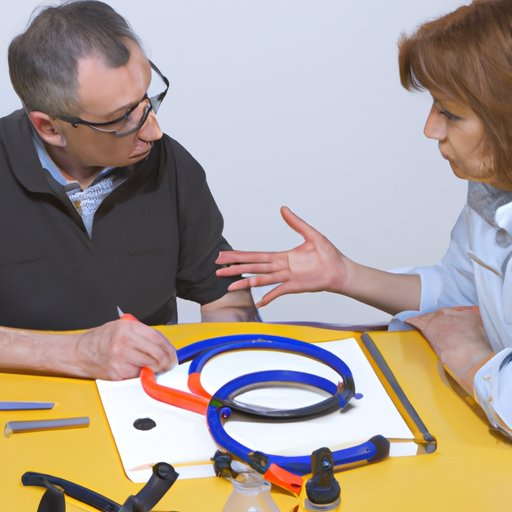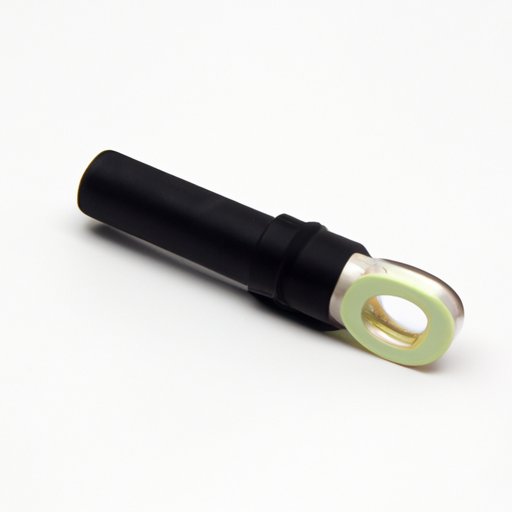Introduction
Oxygen sensors are an integral part of modern vehicles. They are responsible for monitoring and maintaining the air-fuel ratio of the engine, which helps reduce emissions and improve fuel efficiency. In this article, we will be exploring how oxygen sensors work and the benefits they provide.

Explaining the Basics of an Oxygen Sensor and its Functionality
An oxygen sensor is a type of device that measures the amount of oxygen in the exhaust gases of an internal combustion engine, typically found in cars, trucks, and other motorized vehicles. It is designed to detect the presence of oxygen molecules in the exhaust, which can then be used to calculate the air-fuel ratio of the engine. This information is then used to adjust the engine’s performance and reduce harmful emissions.

Examining the Components of an Oxygen Sensor and How They Work Together
Oxygen sensors come in a variety of shapes and sizes, but they all contain the same basic components. These components include a housing, internal electronics, a heater element, and an oxygen-sensing element. Let’s take a closer look at how each of these components works together to make an oxygen sensor.
Sensor Housing
The sensor housing is the outer casing of the oxygen sensor. It is designed to protect the internal components from damage and corrosion caused by the heat and exhaust fumes of the engine. The housing also helps to keep the sensor securely attached to the exhaust pipe.
Internal Electronics
The internal electronics of an oxygen sensor are responsible for controlling the operation of the sensor. This includes managing the power supply to the sensor and processing the data from the oxygen-sensing element.
Heater Element
The heater element is responsible for heating up the oxygen-sensing element so that it can accurately measure the oxygen content in the exhaust. Without the heater element, the oxygen-sensing element would not be able to function correctly.
Oxygen-Sensing Element
The oxygen-sensing element is the most important component of an oxygen sensor. It is responsible for detecting the amount of oxygen present in the exhaust gases. The output from the oxygen-sensing element is then sent to the internal electronics, which processes the data and sends it to the engine control unit (ECU).

Describing the Process of Oxygen Sensor Readings
Once the oxygen sensor has been installed and the engine is running, the oxygen sensor will begin to take readings of the oxygen content in the exhaust. The output from the oxygen sensor is sent to the ECU, which then uses the information to adjust the air-fuel ratio of the engine. By doing this, the ECU is able to maintain a consistent air-fuel ratio, which helps reduce emissions and improve fuel efficiency.
Discussing Common Oxygen Sensor Faults and Troubleshooting Tips
Since oxygen sensors are exposed to extreme temperatures and harsh conditions, they can sometimes experience faults or wear out over time. If your oxygen sensor is malfunctioning, there are several things you can do to diagnose and fix the issue. Common causes of oxygen sensor failure include faulty wiring, incorrect installation, and worn out components.
If you suspect that your oxygen sensor is malfunctioning, the first step is to check the wiring and connections. If everything looks good, then you can move on to checking the sensor itself. You can use a multimeter to check the resistance and voltage levels of the sensor. If the readings are off, then it is likely that the sensor needs to be replaced.
Another thing you can do is to inspect the exhaust system for any blockages or leaks. If there are any, then they need to be repaired as soon as possible. Blockages and leaks can cause inaccurate readings from the oxygen sensor, resulting in poor engine performance.
Conclusion
In conclusion, oxygen sensors are essential components of modern vehicles. They are responsible for monitoring and maintaining the air-fuel ratio of the engine, which helps reduce emissions and improve fuel efficiency. By understanding how oxygen sensors work and being aware of common faults and troubleshooting tips, you can ensure that your vehicle is running at its best.
(Note: Is this article not meeting your expectations? Do you have knowledge or insights to share? Unlock new opportunities and expand your reach by joining our authors team. Click Registration to join us and share your expertise with our readers.)
